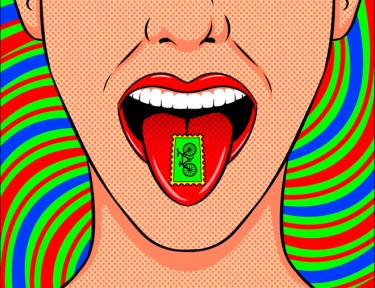
Tusko the elephant was recently honored in a tribute by Guinness World Records, the official repository of amazing human feats and natural world extremes. Tusko, a male Indian elephant at the Oklahoma City Zoo, died as a result of a sad experiment involving an extremely high dose of LSD undertaken for scientific purposes in the early 1960s.
During the 1950s and 1960s, researchers investigated LSD's effects on animals such as dolphins and cats, with goals such as mind control and improved animal communication in mind. In the early 1960s, a team of researchers made the unwise choice to give an enormous dose of LSD to Tusko, a hormonal bull elephant, culminating in a disastrous conclusion.
Tusko's demise highlighted the plight of animals subjected to inadequate care and experimentation. Despite the unfortunate end to his life, Tusko secured a place in the Guinness World Records. Other instances of extreme LSD doses include a notable case in September 2015, where a woman unintentionally ingested 55 mg of LSD—550 times the standard dose. In Tusko's case, the elephant received a staggering 3,000 times the normal dose of LSD.
Within a brief span of an hour and a half, and after multiple doses of barbiturates were administered to counteract the effects of the psychedelic substance, Tusko succumbed to the experiment.
A Desperate Bid for Mind Control and the Shocking Aftermath
In the turbulent 1960s, an unsettling experiment unfolded as researchers sought to harness mind control through the administration of an unprecedented dose of LSD to Tusko, a hormonal bull elephant. Conceived by psychiatrists Dr. Louis Jolyon West and Dr. Chester M. Pierce, alongside zoo director Warren Thomas, the experiment aimed to explore the effects of LSD on animals for potential applications in communication and interrogation. However, the tragic outcome swiftly revealed the severe consequences of injecting Tusko with a dose 3,000 times greater than the normal human recreational amount, leading to a rapid and distressing demise within a mere 80 minutes.
Tusko's inclusion in the Guinness World Records serves as a poignant reminder of the ethical quandaries surrounding extreme scientific measures. Beyond commemorating a life lost, the experiment highlights broader issues about animal welfare, ethical research practices, and the ethical responsibilities inherent in scientific exploration. As we remember Tusko, it prompts us to reflect on the ethical boundaries that must be upheld in the pursuit of knowledge, emphasising the need for stringent safeguards to prevent the recurrence of such distressing episodes.
The Experiment
Commencing on August 3, 1962 (with some accounts suggesting 1963), the researchers initiated a procedure involving the dosing of an elephant. A substantial 300 mg of LSD was injected into Tusko during this ill-fated experiment.
Drs. West and Pierce endeavored to induce Tusko into a state known as "musth," characterized by an aggressive hormonal surge in bull elephants, leading them to secrete a sticky fluid between the ears. This state is crucial for elephant reproduction, as testosterone levels surge to 60 times the normal amount.
Guinness World Records writer Sanj Atwal recounts, "Using a dart gunshot into his right buttock, Tusko was injected with 297 milligrams of the hallucinogenic drug LSD. Nearly 3,000 times greater than the normal human recreational dose, this remains the most significant single dose of LSD ever administered."
Conceived by psychiatrists Dr. Louis Jolyon West and Dr. Chester M. Pierce, along with the then-director of the Oklahoma City Zoo, Warren Thomas, this ambitious plot unfolded amidst a wave of mind control experiments conducted by government agencies.
However, the experiment took a tragic turn.
Within five minutes of the injection, Tusko trumpeted once, collapsed, and defecated. Subsequently, he experienced a severe seizure, with rolled back and closed eyes, stiffened legs, tongue-biting, and labored breathing. Unfortunately, it didn't take long for the elephant to succumb.
"At a dosage nearly 3,000 times the human dose of 25 milligrams, Tusko's reaction was not surprising — trumpeting, erratic behavior, and a crippling seizure," notes Atwal. "Despite being administered large doses of the antipsychotic drug promazine hydrochloride and the barbiturate pentobarbital sodium, Tusko died after 80 minutes, marking the fatality resulting from the largest single LSD dose ever administered."
During the '60s, NASA-funded experiments by John C. Lilly involved injecting dolphins with LSD. In 1977, researchers similarly dosed cats with the hallucinogenic substance.
Atwal also highlights the darker side of Dr. West, describing him as an "evil scientist" involved in Project MKUltra—an illegal CIA program focused on experimenting with brainwashing, psychological torture, and extracting confessions from individuals during interrogations.
Government-Sponsored LSD Experiments
Commencing in 1953, the U.S. Central Intelligence Agency (CIA) initiated Project MKUltra, a venture into human drug experimentation involving hallucinogens. The primary objective was to develop methods and identify substances that could be employed during interrogations to elicit confessions. The CIA aimed to create more potent truth serums.
Sanj Atwal details, "These methods encompassed sensory deprivation, hypnosis, isolation, sexual abuse, the clandestine administration of psychoactive drugs, and various other forms of torture." One notable experiment overseen by Dr. West occurred in 1959, involving radio DJ Peter Tripp's attempt to break the record for the longest time without sleep. Tripp endured eight days and nine hours without sleep, leading to a temporary mental deterioration termed 'nocturnal psychosis' by doctors.
Subsequently, the scope of drug experimentation extended to include animals, exemplified by the Tusko experiment.
Following the Tusko incident, Dr West continued his collaboration with the CIA, as reported by Guinness World Records. In 1963, he assumed the role of psychiatrist for Jack Ruby, the individual who killed Lee Harvey Oswald two days after Oswald allegedly assassinated President John F. Kennedy. Dr. West proposed interrogating Ruby under the influence of sodium thiopental and hypnosis to extract the truth.
On a different trajectory, Dr. Pierce became the founding president of the Black Psychiatrists of America. He actively addressed issues of racism in the U.S. and coined the term "microaggression."
This disturbing chapter in history culminated in a fittingly unsettling end—the tragic experiment conducted at the expense of a rare Indian elephant.
Bottom Line
The tragic experiment on Tusko, an elephant given the largest-ever dose of LSD, remains a somber reminder of the ethical dilemmas in scientific exploration. Commemorated by Guinness World Records, Tusko's story sheds light on the consequences of extreme measures in pursuing knowledge, prompting reflection on the responsibilities inherent in research practices. As we remember Tusko, it becomes imperative to uphold ethical boundaries and implement stringent safeguards to prevent the recurrence of distressing episodes in the quest for understanding.
LSD FOR MEDICAL RESEARCH, READ ON...
LSD FOR ALZHEIMER'S RESEARCH RAMPS UP!







